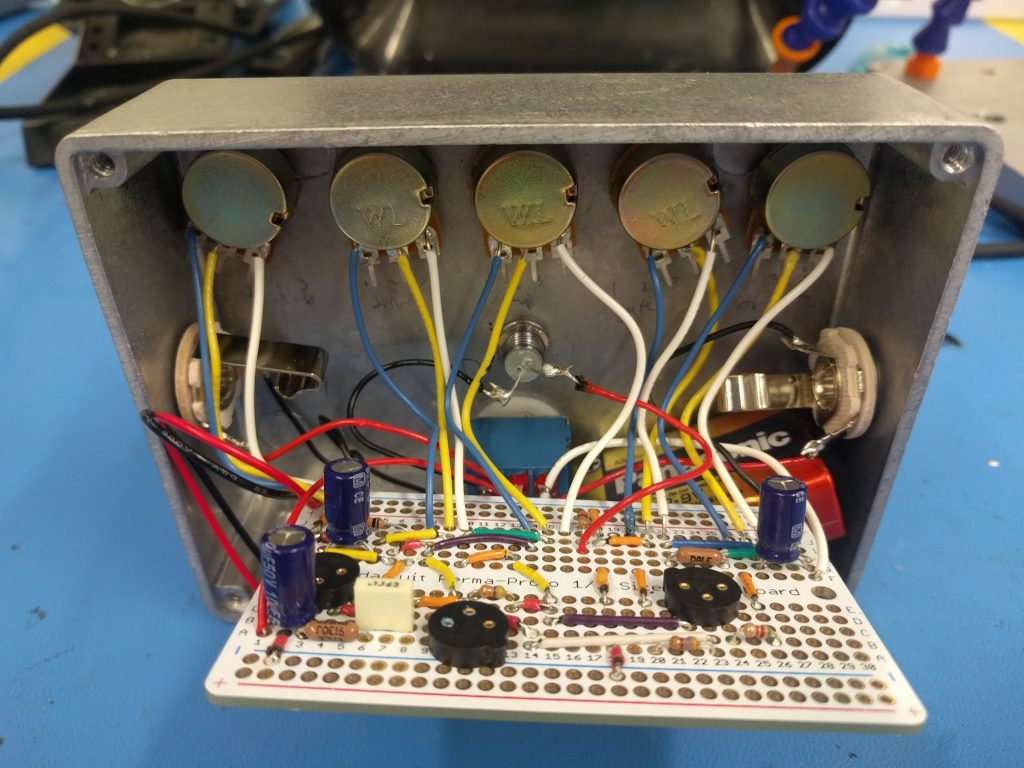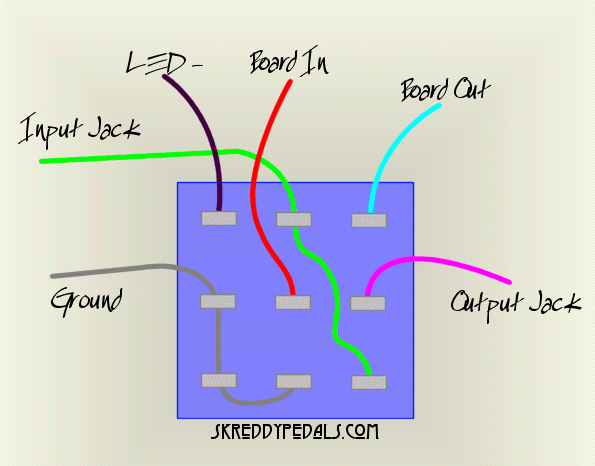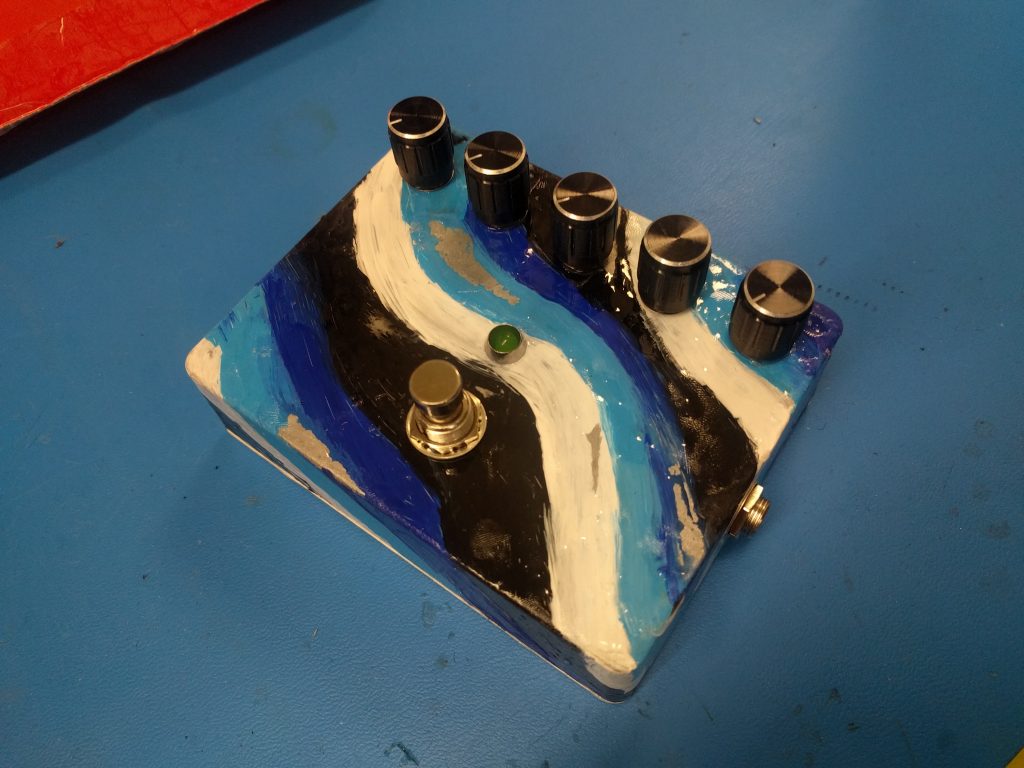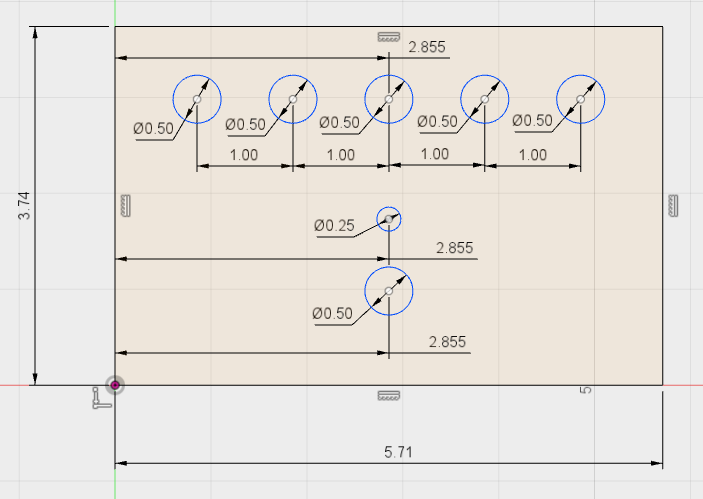I encountered a lot of new topics as part of researching and building my guitar pedal. Even if the schematic is still tough to fully grasp, with all its feedback loops and sort of admittedly unpredictable control, I at least have a handle on what certain components can do. For example, I’d never worked with a DPDT switch before, but it is very useful in a guitar pedal: when the pedal is off, you need to have a clean signal go from input to output; when it is on, then your full circuit should kick in.
I also dealt with the headache of making sure nothing is shorting out, otherwise I didn’t get any output sound. Trying to fit all the components and soldering things cleanly was more difficult than I initially expected, so I could probably improve it by shortening certain wires (i.e. to the potentiometers, which currently have to bend to fully fit inside the enclosure). This is potentially also why my pedal has sporadic output issues if I force the perfboard too hard into the box — it’s something I will definitely look into in the future, since I’ve actually created my one and only guitar pedal, and it sounds pretty good when it works! 🙂
This project deals with some of the signal processing and transistor discussions we had in class, albeit on a much more complex and technical level. For example, I understand how a compressor is supposed to work, but it took me a bit to get its place within the full schematic. When it comes to full schematics like those for guitar pedals, it makes sense that they are quite complex compared to the concepts we touched on in lecture. I’m very happy with how my pedal turned out, even with its quirks, and that I was able to implement one of those (relatively) crazy circuit diagrams!












 er
er
Recent Comments